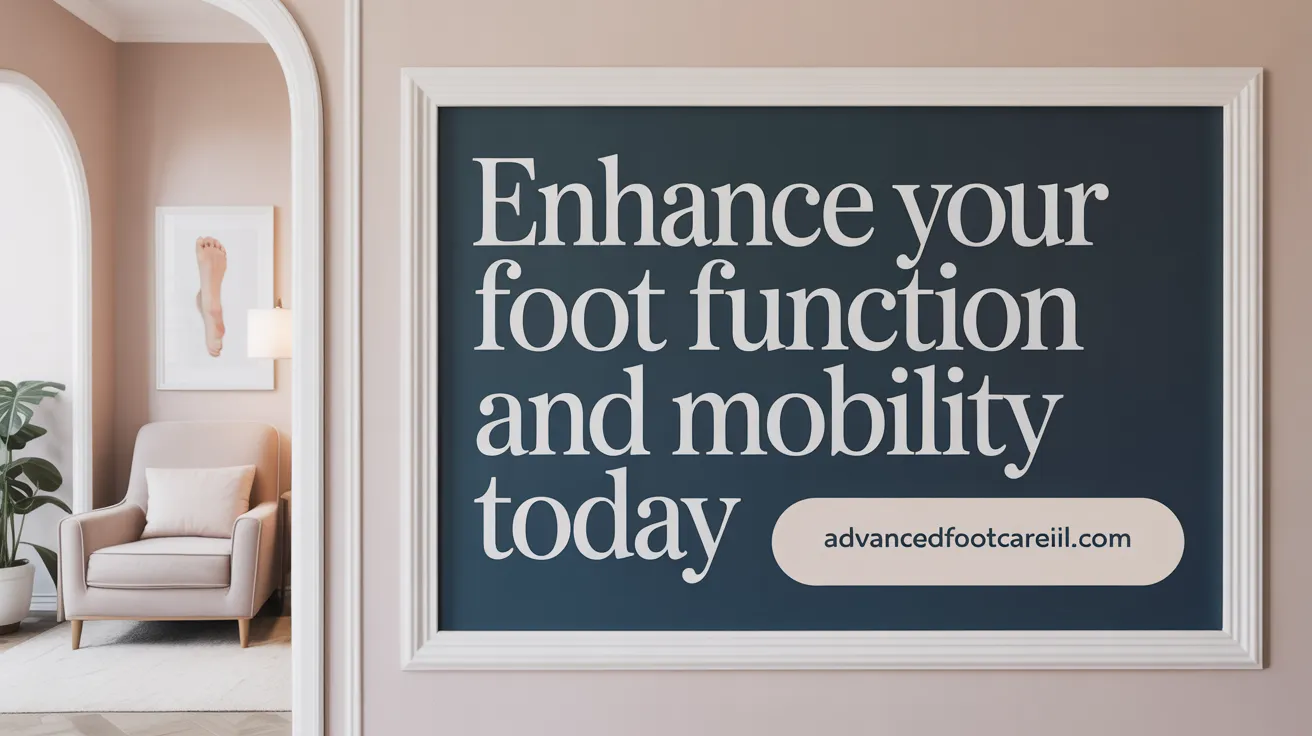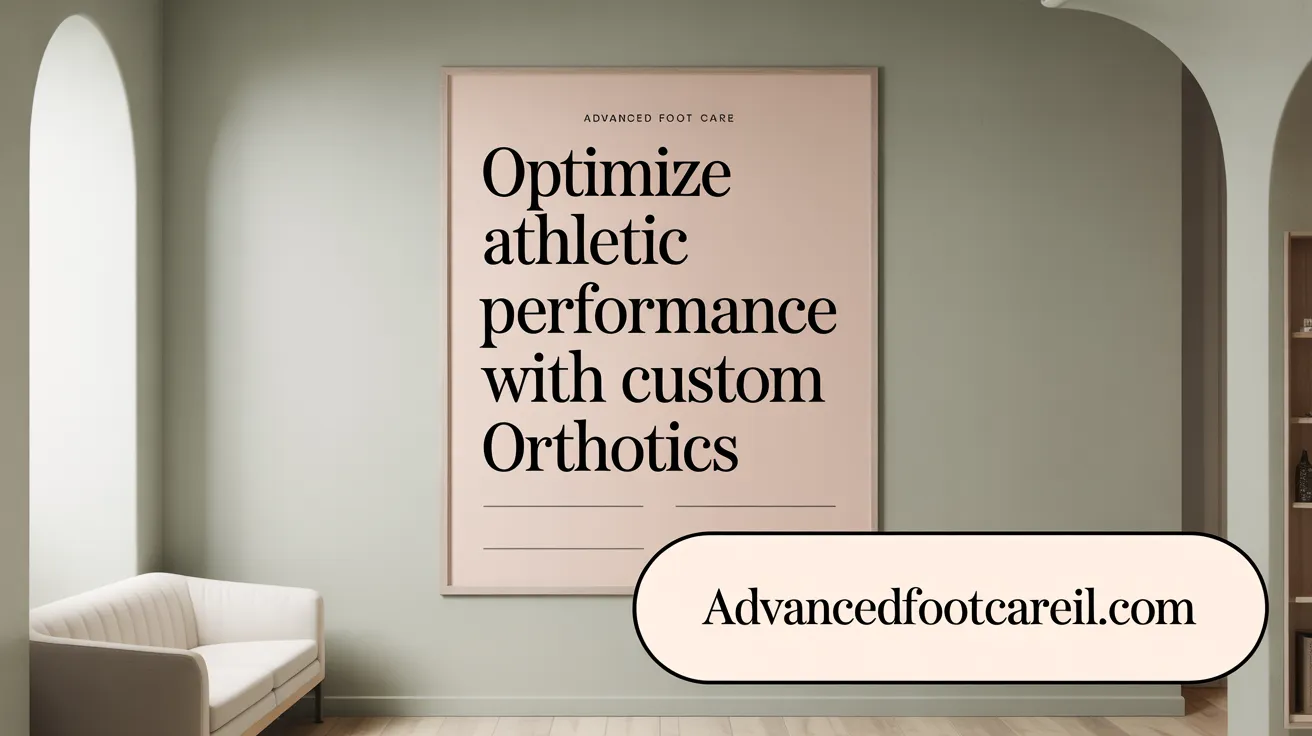Understanding Custom Orthotics and Their Purpose
Custom orthotics are specially designed shoe inserts tailored to fit the unique contours of an individual's feet. Created through precise methods such as plaster molds or computerized scans, these devices aim to support proper foot alignment, enhance stability, and alleviate various foot and lower limb conditions. Far beyond generic store-bought inserts, custom orthotics provide targeted support, helping to redistribute pressure, improve biomechanics, and ultimately prevent injuries while promoting better overall function.
The Science Behind Custom Orthotics: How They Prevent Injury

Biomechanical support provided by custom orthotics
Custom orthotics are designed to provide precise biomechanical support by aligning the foot and ankle structures. They distribute forces evenly during standing and movement, which reduces wear and strain on muscles, tendons, and bones. This support not only stabilizes the foot but improves overall body balance, contributing to a healthier posture.
Correction of foot and ankle misalignments such as overpronation and supination
Many injuries stem from abnormal foot motions like overpronation (inward rolling) or supination (outward rolling). Custom orthotics correct these misalignments by supporting the arches and controlling foot motion. This correction alleviates undue pressure on the knees, hips, and lower back, helping to reduce pain and prevent conditions such as bunions, plantar fasciitis, and Achilles tendinitis.
Impact on muscle activity and movement patterns
Rather than massively shifting skeletal alignment, orthotics influence how muscles respond during motion. They act like filters for force signals sent to the nervous system, promoting more efficient muscle activation. This modulation lowers muscle fatigue and helps maintain proper gait patterns, resulting in less stress on the lower limbs during activity. For more details, see Impact cushioning of shoe inserts.
Prevention of overuse injuries and foot deformities
By supporting the foot's natural contours and redistributing pressure, orthotics prevent common overuse injuries like shin splints, stress fractures, and tendon inflammation. They also help slow the progression of deformities by reducing abnormal stresses that can cause worsening foot shape and function over time. Read more about orthotic insoles for injury prevention.
Reduction of strain on joints and muscles beyond the foot
Custom orthotics extend their benefits beyond the feet by improving alignment up the kinetic chain. Proper foot positioning decreases undue stress on the ankles, knees, hips, and lower back. This reduces muscle strain and joint pain, enhancing overall mobility and preventing secondary injuries. Learn about the benefits of Custom Orthotics.
How do custom orthotics prevent injuries?
Custom orthotics realign the foot and ankle to correct biomechanical abnormalities like overpronation and supination. They redistribute forces evenly, lowering excessive strain on muscles and joints. Additionally, they adjust muscle activity and improve gait efficiency, which collectively prevents injuries such as plantar fasciitis, Achilles tendinitis, shin splints, stress fractures, and knee pain. For further information, refer to How custom orthotics can prevent sports injuries.
Improving Foot Function and Mobility with Custom Orthotics

How do custom orthotics enhance alignment and stability?
Custom orthotics are meticulously designed to match the unique contours of your feet. This tailored fit provides essential support that realigns foot and ankle structures, promoting better stability. Enhanced alignment helps correct biomechanical imbalances such as overpronation or supination, which can otherwise cause strain on knees, hips, and the lower back.
How do orthotics provide pain relief from common foot conditions?
These devices evenly distribute weight and reduce pressure on sensitive areas of the foot, which alleviates pain caused by conditions like plantar fasciitis, bunions, arthritis, high arches, and flat feet. The cushioning element of orthotics also absorbs shock, lessening the impact during walking or running.
In what ways do orthotics improve gait and balance?
By supporting proper foot alignment, custom orthotics improve gait mechanics, allowing for a natural and balanced stride. This stabilizing effect enhances posture, reduces muscle fatigue, and decreases the risk of falls and injuries, especially important for the elderly or those with mobility challenges.
Who benefits particularly from custom orthotics?
Athletes gain from orthotics through improved performance and injury prevention, as orthotics reduce stress on muscles and joints during intense activity. Additionally, diabetic patients benefit significantly by managing foot complications; orthotics redistribute pressure to prevent ulcers and alleviate discomfort.
What role do orthotics play in shock absorption and fatigue reduction?
Custom orthotics act as shock absorbers, minimizing the impact forces transmitted to the feet and lower limbs. This helps reduce muscle fatigue during prolonged standing or athletic activity, supporting endurance and comfort throughout daily life and sport.
Overall, custom orthotics serve as a comprehensive solution to enhance foot function, relieve pain, and support mobility across diverse populations, improving quality of life and physical performance.
Custom Orthotics in Sports: Enhancing Performance and Injury Prevention

Specific benefits for athletes
Custom orthotics are designed to precisely fit an athlete’s feet, providing tailored support that aligns the foot, ankle, and leg. This alignment optimizes biomechanical efficiency, reducing abnormal stress on joints and muscles. Orthotics distribute pressure evenly, helping alleviate foot pain from conditions like plantar fasciitis or Achilles tendinitis, which are common in sports.
Reducing stress and overuse injuries
By improving foot and leg alignment, orthotics reduce the risk of overuse injuries such as shin splints, runner’s knee and stress fractures. They help correct issues like overpronation or supination that can lead to repetitive strain. The shock absorption properties in orthotics decrease impact forces during running or jumping, easing stress on bones and soft tissues (source).
Enhancement of stability, balance, and shock absorption
Orthotics provide enhanced stability and balance, critical for preventing ankle sprains and falls during sports. They absorb and dampen impact vibrations, reducing muscle fatigue and discomfort. This leads to improved endurance and performance, allowing athletes to train longer and with less risk of injury (source).
Tailoring orthotics for different sports needs
Orthotics can be customized to meet the specific demands of various sports. For example, runners benefit from increased shock absorption, while court sport athletes require support for quick lateral movements and stability. Cyclists gain from optimal foot alignment enhancing pedal efficiency, and golfers improve balance and posture through stable foot positioning (source).
Role in muscle fatigue reduction and recovery
By supporting proper foot mechanics, orthotics minimize unnecessary muscle activity and reduce fatigue. This supports quicker recovery times after intense training or competitions. Athletes experience less pain and better movement fluidity, optimizing overall athletic performance (source.
How do custom orthotics help athletes prevent injuries and improve performance?
Custom orthotics aid athletes by correcting foot and leg alignment, which optimizes biomechanical efficiency and reduces undue stress on the ankles, knees, hips, and lower back. They improve shock absorption during high-impact activities such as running and jumping, decreasing the risk of injuries like shin splints, runner's knee, and Achilles tendinitis. Orthotics enhance stability and balance, helping prevent ankle sprains and falls. Additionally, by minimizing muscle fatigue and promoting efficient movement, orthotics enable longer training sessions and quicker recovery (source.
Types and Customization: Tailoring Orthotics to Individual Needs
What are the different types of custom orthotics and how are they customized?
Custom orthotics come in two main types: functional orthotics and accommodative. Functional orthotics are semi-rigid devices made to control abnormal foot motions and provide structural support. They are typically used to correct biomechanical issues such as overpronation or supination. Accommodative orthotics, on the other hand, are softer and designed primarily to cushion sensitive areas, providing shock absorption for conditions like foot ulcers or painful calluses.
How are custom orthotics fitted?
To create a perfectly tailored orthotic, podiatrists use one of several fitting methodologies:
- Plaster molds: A traditional method where a mold is taken of the foot to capture its contours precisely.
- Foam impressions: The foot is pressed into a foam box to create an impression.
- Digital scans/computerized analysis: Modern scanning technology produces a 3D image for highly precise fabrication.
These techniques ensure the orthotic matches the unique shape and pressure points of the individual’s feet for maximum comfort and support. For detailed explanation, see Custom orthotics fitting process and Creating Orthotics Mold.
What factors influence customization?
Customization takes into account multiple important factors including:
- Activity levels: An athlete might require more durable, semi-rigid orthotics to withstand impact and dynamic movements. Learn more about Orthotics for sports injury prevention and Orthotics and athletic performance.
- Foot deformities: Flat feet, high arches, bunions, or tendonitis require specific support or cushioning strategies. See Foot and ankle conditions treated by orthotics and Orthotics for foot and ankle alignment.
- Health conditions: Diabetes or arthritis may necessitate accommodative styles focused on pressure relief. For more details, visit Diabetes and orthotic support and Arthritis foot relief.
Why is professional evaluation and follow-up important?
Professional evaluation by a podiatrist or foot specialist is crucial to identify the precise needs and to design the orthotic accordingly. Subsequent follow-up appointments help adjust the orthotic for comfort and effectiveness, addressing any issues during the adaptation period, which can last up to a month.
How long do custom orthotics last and what maintenance is required?
With proper care and depending on factors like material quality, user activity, and body weight, custom orthotics can last between one to several years. Regular cleaning, proper shoe fit, and periodic reassessments by a healthcare professional help maintain their functionality and longevity. For more information, see Extending orthotics lifespan and How to care for orthotics.
Long-Term Benefits and Considerations When Using Custom Orthotics

What are the Long-Term Benefits and Important Considerations for Using Custom Orthotics?
Custom orthotics offer significant long-term benefits, especially for individuals with chronic foot, ankle, and lower limb conditions. They provide effective pain relief by supporting proper foot alignment and function, which helps reduce strain on muscles and joints throughout the kinetic chain, including the knees, hips, and lower back. This improved biomechanical balance not only alleviates discomfort but also enhances overall posture and stability. Learn more about the benefits of custom orthotics.
One major advantage of custom orthotics is their potential to prevent or delay invasive treatments like surgery. By correcting foot mechanics and supporting natural alignment, they help slow the progression of deformities and related issues, contributing to sustained mobility and improved quality of life. Discover how orthotics can prevent foot deformities and support foot and ankle conditions.
Users should expect an adaptation period of up to one month, during which consistent use is essential to allow the feet to adjust comfortably to their new support. Long-term success depends on proper care and maintenance of the orthotics, along with regular follow-ups with healthcare professionals. These assessments ensure that the orthotics continue to fit well and function effectively as foot shape, activity level, or health status changes over time. See more about the custom orthotics fitting process and adjusting to orthotics.
Ultimately, custom orthotics are a valuable, long-lasting investment in foot health that supports pain management, promotes proper alignment, and reduces the risk of further complications. Learn about the long-term care and benefits of orthotics.
The Path Forward with Custom Orthotics
Custom orthotics represent a scientifically backed, personalized approach to preventing injury and enhancing foot and lower limb function. By addressing individual biomechanics, they offer tailored support that goes beyond symptom relief to improve overall posture, mobility, and athletic performance. Whether for everyday comfort, managing chronic conditions, or optimizing sports activities, consulting a healthcare professional for custom orthotics can be a valuable step towards long-term foot health and injury prevention. Proper fitting, patience during the adaptation period, and regular follow-up care are key to unlocking their full potential and ensuring lasting benefits.
